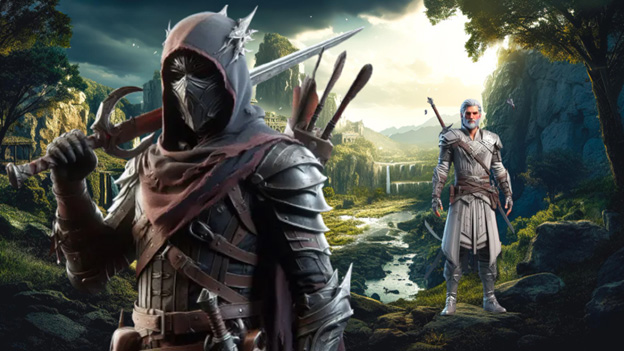
Mastering AI: Exploring the Role of AI Characters in Modern Video Games
From the humble beginnings of Pong and Space Invaders to the immersive worlds of today’s AAA titles, artificial intelligence (AI) in video games has been nothing short of remarkable. Initially confined to simple rule-based systems, AI characters have undergone a transformative journey, driven by hardware capabilities and sophisticated algorithms.
Today, we will understand more about AI characters in video games, exploring their significance, development process, challenges, and future trends. Harnessing the capabilities of AI video generators, we aim to delve deeper into the evolution of these characters, their dynamic behaviors, and the immersive experiences they offer to players
Understanding AI Characters in Video Games
In video games, AI characters possess a range of functions, including navigation, decision-making, and interaction with other entities within the game world. Whether they serve as companions guiding the player through a narrative or adversaries challenging their skills in combat, AI characters play pivotal roles in shaping the player’s journey and overall gaming experience. For those hosting large multiplayer experiences on custom platforms, utilizing RedM Server Hosting ensures stability and performance, particularly in complex environments that rely on AI behaviors.
Role Of AI Characters in Video Games

Unlike static obstacles or scripted events, AI characters in video games possess agency and autonomy, allowing for dynamic interactions and unpredictable outcomes. Whether they’re allies, foes, or neutral entities, AI characters contribute to the richness and depth of virtual worlds, fostering immersion and engagement for players. Moreover, central to the creation of AI characters are the 3D game models and assets that bring them to life. These digital representations form the visual and auditory components of AI characters, encompassing everything from their appearance and animations to their sound effects and dialogue.
Types of AI Characters and Their Roles in Different Genres
AI characters come in various forms, each tailored to suit the unique demands of different gaming genres. In narrative-driven adventures, companion AI characters provide emotional support and drive the plot forward through dialogue and scripted events. In strategy games, AI-controlled factions engage in complex decision-making processes to outmaneuver the player on the battlefield. Meanwhile, in stealth games, enemy AI characters exhibit heightened awareness and adaptive behaviors, posing formidable challenges to players seeking to remain undetected. The roles and behaviors of AI characters vary widely across genres, contributing to the diversity and richness of gaming experiences.
The Development Process of AI Characters
Creating realistic 3D game models for AI characters involves blending artistic creativity with technical expertise. High-resolution sculpting techniques allow artists to craft intricate details like facial features and clothing textures, enhancing visual fidelity. Animation brings AI characters to life, adding personality and fluid movement. Motion capture technology captures real actors’ movements, translating them into lifelike animations.

Integrating AI behaviors into 3D game assets requires developing complex algorithms. Pathfinding algorithms enable characters to navigate dynamic environments efficiently. Decision-making algorithms dictate behaviors based on player input and environmental stimuli. Situational awareness algorithms ensure contextually appropriate actions. Balancing realism with gameplay mechanics is crucial to avoid detracting from player enjoyment. Developers must tailor AI behaviors to align with gameplay mechanics and player expectations. Striking this balance enhances the overall gaming experience without compromising player satisfaction.
Future Trends and Possibilities in AI Character Development
Looking ahead, the future of AI characters in video games holds endless possibilities. With advancements in technology such as virtual reality, augmented reality, and cloud computing, developers have unprecedented tools at their disposal to create even more immersive and dynamic gaming experiences. Moreover, as AI continues to evolve, we can expect to see further integration of machine learning algorithms and natural language processing techniques, enabling AI characters to become even more responsive, adaptable, and lifelike.
Conclusion
To conclude, AI characters in video games, is important in enhancing player immersion and engagement globally. Their evolution showcases developers’ creativity and dedication. As we advance in technology and storytelling, AI characters offer limitless possibilities for exploration and innovation in gaming. Start creating with 3DAiLY – a Gen AI tool that offers features like character customization, game modelling and game assets.






